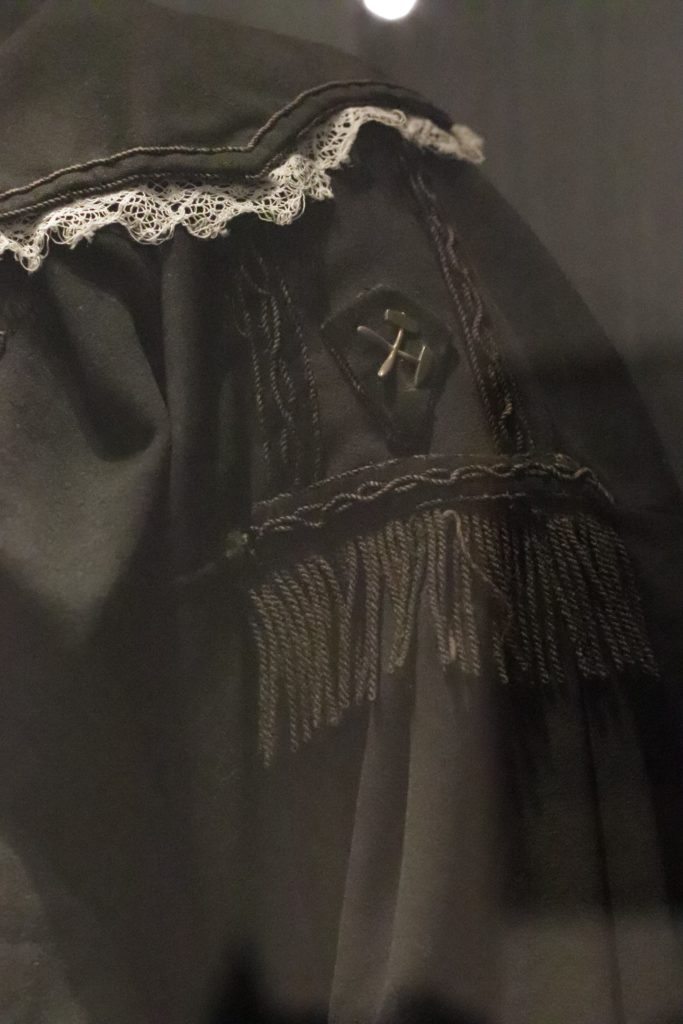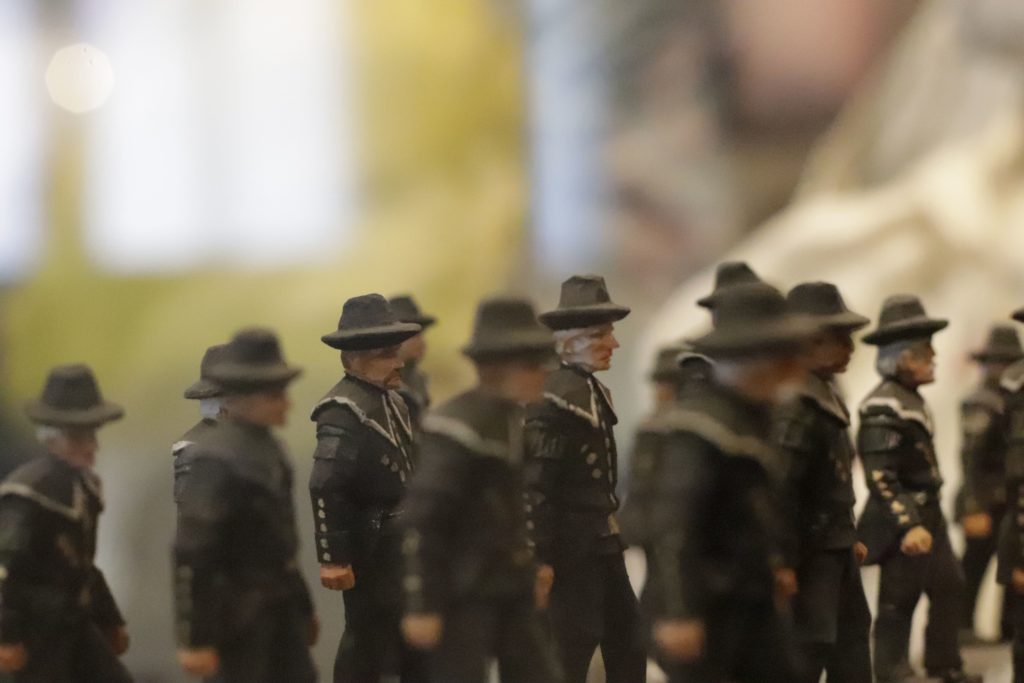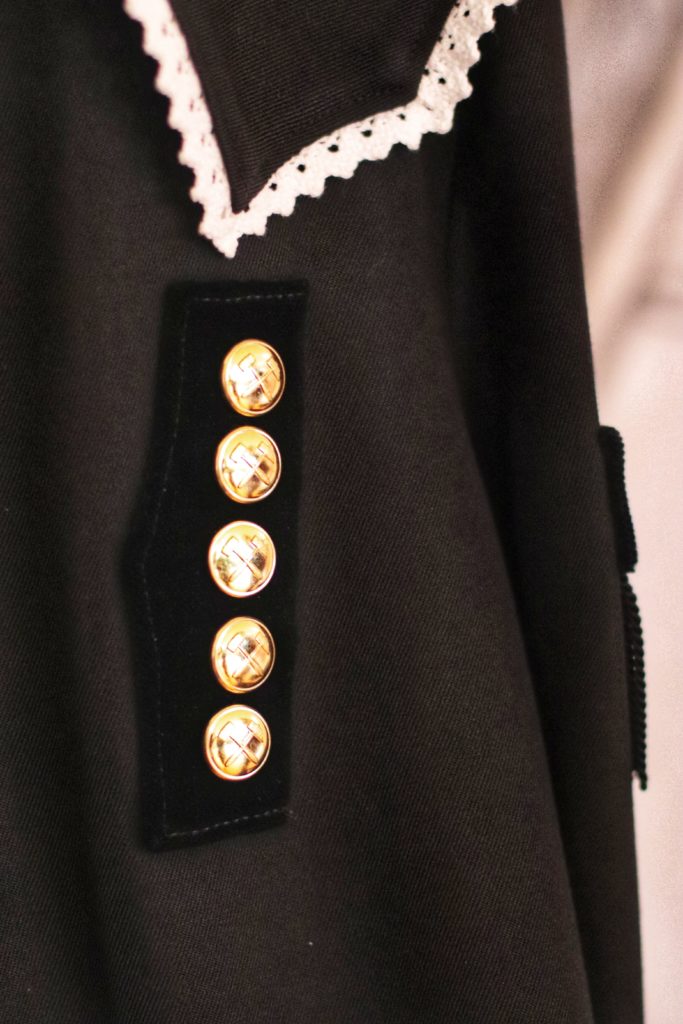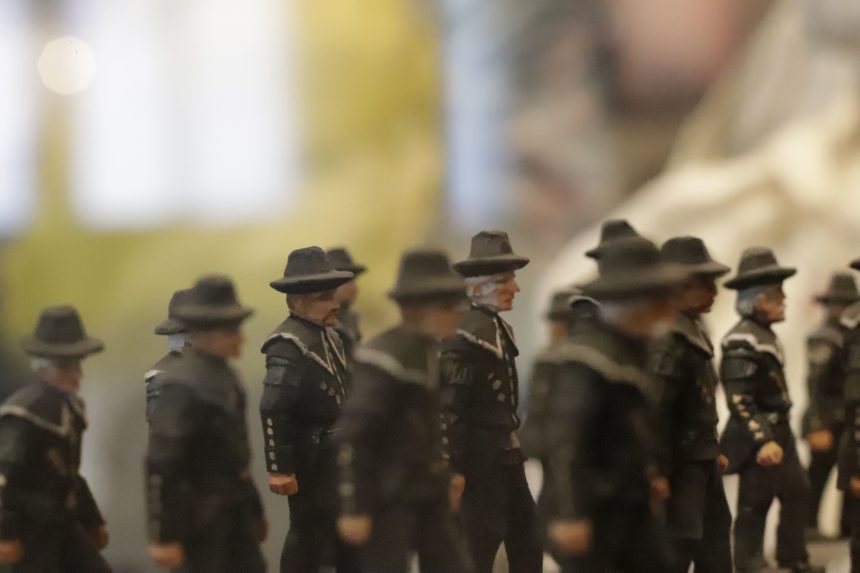It is nothing new that the tangible legacy of mining is visibly present in the remotest parts of the Ore Mountains, in Germany. However, this important UNESCO World Heritage site also draws heavily on the intangibility of the traditions and commemorations associated with the physical spaces and the memory of the mining boom period. And when it comes to the inherent connection between tangible and intangible heritage, objects can be a very useful source. This is the case of the famous uniforms worn by miners’ associations in the so called Bergparaden (Mountains/Miners Parades) or Mettenschicht (The last shift before Christmas), events that happen annually in most towns of the region. Once you visit the Ore Mountains, it becomes easy to notice the relevance of these textile fragments of past for the local communities due to the constant visual references to the uniforms in different museums, associations and other symbols scattered around the region (for example: houses, factories, etc.)
If you are lucky enough to visit the locality in the weeks that precede Christmas, – the period when the region turns into a magical place -, you will probably be able to experience one of the parades that happen in different towns of the mining zone of Erzgebirge (Ore Mountains). The famous events gather hundreds of people who are interested in preserving the local heritage, the legacies of the mining system, and honoring the shared past of the region and its connections.

However, historically speaking, the Bergparaden has changed over the centuries and, back in the day, the purpose was a bit different than what is done these days. In the past, the planning of this type of collective ceremony was linked to the visit of important people to the mining region – such as the King or other powerful authorities. Also, what is called the Last Shift Before Christmas, – a special occasion that was transformed into the parades that lead up to the 24th of December -, represents the final miners workday before Christmas, which was historically celebrated by the miners with a meal, songs and a sermon. The earliest mention to the local costumes (in german Berghabit or Miners’ uniforms) and parades was registered in the 17th century, while regulations on the miners’ uniforms were first stated in the beginning of the 18th century. The uniform established consisted of black jackets, white trousers, and knee pads; however, throughout the years the so referred Berghabit changed due to regulations around the region, and it was abolished in 1869 with the change of the mining law.

As in many cultures around the world, symbolism is present in celebrations and festivals, and the miners’ parades in the Ore Mountain aren’t an exception. Velvet, buttons, colors, specific clothes, the kind of hat, detailed decoration… in the Erzgebirge Parades everything has a meaning or a reason. For example, workers in the cobalt blue factory used to wear blue trousers in reference to the pigment produced within their business, while laborers employed in functions revolving around the mining system in Schneeberg would wear yellow trousers. But don´t forget: not only were the colors and symbols important in these events, but also the presence of the tools used in the daily work. Marching with tools was and still is nowadays a matter of pride and a way to value each profession involved in the mining process. Wise and old people also had their own place in the parades… Right at the back you would find the retired miners wearing black uniforms with lace collars and buttons decorated with the traditional figures of a hammer and a pick, symbolically “ending” the event.

Nowadays the uniforms are worn in specific events and especially in the annual parades – usually held in December -, representing different professions within the mining system and promoting the intangible symbols of the miner’s life.
But don’t worry if you are not able to visit the region during Christmas time! In Schneeberg, for example, you can also come across a big miners’ parade during summer! How amazing is it to witness a historical tradition while having an ice cream? If the idea sounds good to you, start planning your visit to the lovely town for the 22nd of July, the annual celebrative date for the local miners of the region … and be prepared to immerse in the (over) 700 years old mining tradition of the Ore Mountains! ■
By Angelica Vedana and Blanca Calvo Alonso
